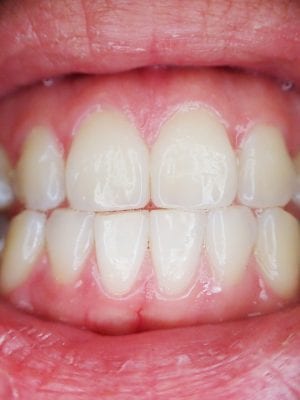 No one has perfect teeth. Aging, dental hygiene and previous injuries or accidents can all affect the form and function of your teeth. Luckily, there are many dental procedures designed to improve the way your teeth look and function, such as bonding. The process of bonding teeth has a few advantages over options such as veneers, including a lower price tag and a shorter wait time. If you aren’t happy with the appearance of your teeth, or if you have an issue that needs to be corrected, bonding might be the right procedure for you.
No one has perfect teeth. Aging, dental hygiene and previous injuries or accidents can all affect the form and function of your teeth. Luckily, there are many dental procedures designed to improve the way your teeth look and function, such as bonding. The process of bonding teeth has a few advantages over options such as veneers, including a lower price tag and a shorter wait time. If you aren’t happy with the appearance of your teeth, or if you have an issue that needs to be corrected, bonding might be the right procedure for you.
WHAT IS TOOTH BONDING?
Tooth bonding is simply the application of a material, such as a composite resin, to the surface of the tooth. Before a dentist bonds a tooth, or multiple teeth, he or she will select a shade of resin that closely matches the natural shade of the patient’s teeth. This assures that the final result looks as authentic as possible.
The process of bonding teeth involves roughing up the surface or outer enamel before the tooth, or teeth, can be treated. This helps the material get a better grip on the tooth. When the tooth has been prepared, the dentist will apply the bonding material to it. To make the bonding material look like a tooth, the dentist will then shape it before using a special light to set it. After the resin has hardened and set, the dentist will polish the material so that it has the same appearance as the rest of the paient’s teeth. The bonding process is usually completed in a single visit, after which you can go back to business as usual. In many cases, the process of bonding doesn’t require any anesthesia.
WHY WOULD YOU NEED IT?
There are a number of dental issues that bonding can correct. According to the American Academy of Cosmetic Dentistry, bonding is most often used to successfully correct chipped teeth. However, your dentist may also recommend it if you have large spaces between your teeth or if one tooth is considerably smaller than the others. Bonding can also be used if your teeth are very discolored, and in some cases, it’s considered over amalgam or metallic fillings, or to replace a metallic filling.
ARE THERE OTHER OPTIONS?
Bonding teeth can be a permanent fix for chipped, discolored or misshapen teeth. Some people, however, use it as a transitional treatment, and have their teeth bonded while waiting for a more involved or expensive option, such as veneers. Veneers are thin layers of porcelain that are applied to the front of the tooth to correct its color or shape. While they do cost more than bonding, they are also stain-resistant and tend to be more durable than bonding.
HOW DO YOU CARE FOR BONDED TEETH?
It’s important to care for bonded teeth just as you would your natural teeth. The bonding material can stain, so along with avoiding foods and drinks that discolor teeth, such as coffee and red wine, you should use a toothpaste that removes surface stains. Flossing daily and seeing your dentist on a regular basis for an exam and cleaning are also part of taking good care of bonded teeth.
Because the bonding material can break or fracture, you also want to avoid any habits or activities that can potentially damage the teeth. Nail-biting or using your teeth to open bottles or to pry lids off of jars should be avoided. Wear a mouthguard when you play any sports to protect all of your teeth, not just those that are bonded.
Bonding offers a relatively inexpensive, long-lasting way for you to change and improve the appearance of your teeth. With the right care, your smile will look great for many years.

